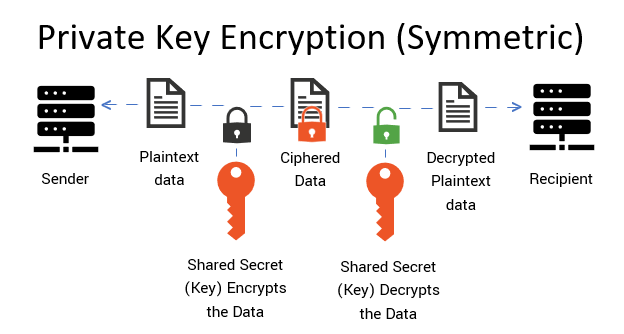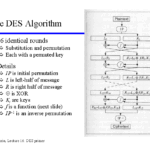In the vast and labyrinthine world of information security, the terms “private key” and “encryption” evoke a sense of mystery and complexity that challenges the uninitiated. What if there existed a secret language, one so cryptic that only a select few could decipher its meaning? As we delve into the enigmatic realm of private keys, we encounter not only technical undertones but also pivotal philosophical questions surrounding trust, security, and privacy.
To begin unraveling this intricate web, one must grasp the foundational concept of encryption itself. Encryption is the process of encoding information in a manner that makes it accessible only to those who possess the requisite keys for decryption. At its core, encryption serves as a bulwark against unauthorized access, safeguarding sensitive data from prying eyes. Yet, even within this secure framework, the dichotomy between public and private keys emerges as a fascinating conundrum.
In the public key infrastructure (PKI), two distinct but interrelated keys operate harmoniously: the public key, which is openly disseminated, and the private key, kept under the strictest confidentiality. This architecture begs the question: how can we trust that the private key remains secure, guarding our secrets without faltering?
Consider the playful analogy of a treasure chest, locked with a key only known to its owner. Anyone can admire the chest (akin to the public key), but only the owner, armed with their private key, can unlock it and access the treasures within. This metaphor enhances our understanding of private keys and illuminates the intricacies of asymmetric encryption.
Asymmetric encryption is a method wherein the public key encrypts information, while the corresponding private key decrypts it. This ensures that even if an eavesdropper intercepts the public key, they cannot decode the encrypted data without the private key. If both keys were the same (as in symmetric encryption), a single point of failure would jeopardize security, exposing users to potential breaches.
Yet, the inherent complexities of private key management present a challenge of their own. The more robust the encryption, the more potential pitfalls arise in key generation, distribution, and storage. An individual must ensure that their private key is securely stored, impervious to unauthorized access. Consider the implications of digital wallets, which hold cryptocurrencies: losing a private key can mean the irreversible loss of assets. The stakes are indeed high.
Furthermore, the exponential rise in cyber threats raises pertinent questions regarding the efficacy of current encryption standards. As technology evolves, so too do the capabilities of malicious entities aiming to crack encryption protocols. For instance, the advent of quantum computing threatens to upend traditional cryptographic methods, posing potential challenges to the very framework that underpins digital security.
In response to such challenges, a new wave of researchers and cryptographers is diligently exploring post-quantum cryptography. These efforts aim to devise encryption methods resistant to potential quantum threats, ensuring that private keys remain secure in a future dominated by advanced computational power. Therein lies a unique interplay between challenge and innovation, as the cryptographic community rallies to fortify defenses in the face of an evolving risk landscape.
Another critical aspect to consider is user behavior regarding private key management. Education plays a vital role in empowering users to securely handle their private keys. In an age where digital interactions are ubiquitous, complacency can lead to monumental security failures. Implementing two-factor authentication, utilizing hardware security modules, and regularly updating key management practices can significantly bolster the protection of private keys.
Moreover, the influence of social engineering should not be underestimated. Fraudsters often exploit psychological vulnerabilities, persuading unsuspecting individuals to relinquish their private keys unwittingly. Thus, fostering a culture of awareness, coupled with robust security measures, becomes paramount in the ongoing struggle against breaches and unauthorized access.
Ultimately, the journey through the domain of private keys is a microcosm of the broader landscape of data security. It is not merely about preventing unauthorized access, but also about preserving trust in an increasingly interconnected digital milieu. The challenges posed by emerging technologies must provoke ongoing dialogues among stakeholders, inspiring collaborative solutions to safeguard privacy and maintain the integrity of information.
To encapsulate, the concept of private keys transcends simple technical terminology; it embodies a delicate balance between security, usability, and trust. As individuals, organizations, and nations navigate esta intricate web, fostering resilience against encryption failures remains imperative. The questions posed by encryption are not merely technical; they are ethical and philosophical, pushing us to consider the future of privacy and the lengths we are willing to go to defend it.
To ponder the impact of private keys is to reflect on our societal constructs regarding confidentiality and trust in the digital age. As we stand on the precipice of transformation in technology and encryption, one must ask: will we rise to the challenge and fortify the very essence of what it means to be secure?









Leave a Comment